Imagine this: you’re running a startup, things are good, but deep down you know something’s not quite right. The market is shifting, your customers want more and the once electric energy around your brand is fading. It’s a hard pill to swallow but you know continuing down the same path won’t cut it anymore.
You’ve seen big brands like Apple and Pepsi successfully rebrand themselves and now it’s your turn to change. Welcome to the world of rebranding—a journey not just of logos and color schemes but of reimagining who you are and what you stand for.
Rebranding isn’t about throwing away the past, it’s about shaping the future.
Whether you want to get rid of an old image, attract new customers or adjust after rapid growth, this process can inject new life into your business.
But it’s not just about a new logo—it’s about rediscovering your company’s identity and sharing it with the world in a way that means something. Crucially, brand guidelines play a vital role in this process, ensuring consistency across all marketing efforts and helping to shape the future identity of your brand.

Take a moment to think about brands that feel familiar—ones you’ve known for years maybe even decades. Now think about those same brands during a time of transition. Apple for instance didn’t just shift from computers to consumer electronics they repositioned themselves as a symbol of innovation and creativity.
This is the essence of rebranding: recognizing your brand no longer reflects who you are and making the bold decision to change it into something that does.
Rebranding happens for many reasons. It could be a merger where two companies become one and need a new identity to reflect that. It could be because a company has outgrown its original mission or is expanding into new markets.
Whatever the reason, a comprehensive brand strategy is essential.
A strong brand strategy not only enhances brand value but also aligns the new brand identity with the company’s overall business objectives, creating a cohesive narrative that resonates with the target audience.

Corporate branding is more than just a logo or a catchy tagline; it’s a comprehensive strategy that aims to establish a unique and lasting image in the minds of customers, investors, employees, and other stakeholders.
It embodies the core essence of a company, including its brand values, vision, and mission. Think of corporate branding as the narrative that weaves through every aspect of your business, creating a cohesive story that resonates with your target audience.
From the way your customer service team interacts with clients to the culture within your company, corporate branding extends to all facets of the corporate entity.
It’s about creating a consistent and compelling message that reflects who you are as a company and what you stand for. When done right, corporate branding can set you apart in a crowded market, making your brand memorable and trustworthy.
The power of a well-crafted corporate brand lies in its ability to differentiate your company in a crowded market. A strong corporate brand creates a cohesive perception that can significantly enhance brand value and brand equity. It’s not just about being recognized; it’s about being remembered for the right reasons.
A strong corporate brand builds a solid foundation for long-term relationships with customers. It fosters trust and loyalty, which are crucial for sustained business success. When customers feel a connection to your brand, they’re more likely to stick around and even advocate for you.
This is the essence of brand power.
Understanding the dynamics of corporate branding and its impact on brand power is crucial for businesses aiming to establish a formidable presence in their respective industries. A strong corporate brand isn’t just a nice-to-have; it’s a must-have for any company looking to thrive in today’s competitive landscape.
Rebranding can be a significant corporate investment, and it’s essential to understand the reasons behind a rebrand and to have a clear plan in place before starting the process. Here are some signs that your company may need rebranding:

If your brand looks like it’s stuck in the past, it might be time for a refresh. An outdated brand image can make your company seem out of touch with current trends and customer expectations.

As businesses evolve, their original branding may no longer fit. If your company has pivoted or expanded into new markets, your brand identity should reflect these changes.

Sometimes, a rebrand is necessary to distance your company from a scandal or negative perception. A fresh start can help rebuild trust and improve your brand image.

If your brand isn’t well-known or easily recognizable, it might be time to increase brand awareness. A rebrand can help you stand out and make a stronger impression on your target audience.

If your target audience has shifted, your brand needs to resonate with them. A rebrand can help you connect with new demographics and stay relevant.

Inconsistencies in your marketing materials can confuse customers and dilute your brand message. Developing a strong brand identity with clear guidelines can ensure consistency across all channels.
By identifying these signs, you can determine whether rebranding is necessary for your company and develop a rebranding strategy that aligns with your business objectives. Rebranding isn’t just about changing your logo; it’s about creating a brand that truly represents who you are and where you’re going.
Rebranding is a big change but it comes with its own set of challenges. Knowing what to expect helps with a smoother transition and more success. Here are some of the challenges you can expect during a rebrand:

One of the biggest risks of rebranding is confusing or disconnecting your existing customer base. Your loyal customers will feel disconnected or unsure if the rebrand isn’t communicated properly.

Solution: Communicate throughout the process. Explain why the rebrand is happening and how it will benefit the customer. Gradual transitions where possible help customers get used to the new brand.
Employees are the face of your brand and if they’re not on board with the changes the rebrand will struggle to gain momentum. Resistance can come from fear of change or misalignment with the new direction.

Solution: Involve employees early in the rebranding process. Educate them on why the rebrand is happening and how it aligns with the company’s mission and values. Train them on how to represent the new brand and make sure they feel included and excited about the change.
A big challenge with rebranding is retaining the equity the original brand has built over time—trust, recognition, customer loyalty, and brand loyalty—while introducing a new identity. Retaining brand loyalty is crucial for maintaining the equity built over time. There’s always a risk of losing the goodwill of the old brand.

Solution:Keep what your audience loves about your brand and introduce new. Find the balance between evolution and continuity. Retain parts of your visual identity like color schemes or taglines to give a sense of familiarity.

Rebranding is expensive. The process requires updating logos, signage, packaging, marketing materials, digital assets and even the interior design of physical locations. The costs can add up fast and there’s always the risk of over investing in a rebrand that doesn’t deliver.

Solution: Budget carefully and plan for all stages of the rebrand. Work with a clear strategy and prioritise areas that will have the biggest impact. A phased approach where changes are rolled out over time can help spread the costs.
Rebranding requires consistent execution across all customer touchpoints—from social media and websites to physical stores or product packaging. Updating the brand logo and ensuring it aligns with the new brand identity across all channels is crucial. Inconsistencies will confuse customers and dilute the new brand.

Solution: Create a brand style guide that covers all aspects of the rebrand including visual elements (logos, fonts, colors), tone of voice, messaging and customer interactions. Train all teams from marketing to customer service to ensure the new brand is rolled out consistently.
Rebranding requires consistent execution across all customer touchpoints—from social media and websites to physical stores or product packaging. Updating the brand logo and ensuring it aligns with the new brand identity across all channels is crucial. Inconsistencies will confuse customers and dilute the new brand.

Solution: Create a brand style guide that covers all aspects of the rebrand including visual elements (logos, fonts, colors), tone of voice, messaging and customer interactions. Train all teams from marketing to customer service to ensure the new brand is rolled out consistently.

Rebranding can hurt your website’s SEO, especially if you’re changing your brand name or domain. Search engines will need time to re-index your new content and you may lose traffic in the short term.

Solution: Have an SEO strategy in place with your rebranding. Use 301 redirects to point old URLs to new ones and update metadata and keywords to reflect the new brand. Keep your content quality high to help maintain your search rankings.
Rebranding is a complex process that involves multiple departments, stakeholders and external partners. Coordinating all these moving parts can be hard to manage and meet deadlines.

Solution: Create a project timeline with realistic deadlines for each stage of the rebranding process. Ensure strong project management and communication among all involved to keep it on track.
Some companies rebrand without knowing why they’re doing it or what they want to achieve. A surface rebrand—just changing logos and colors—will not deliver the deeper results a company needs.

Solution: Rebrand with a strategy in mind. Know the purpose of the rebrand, whether it’s to reach new audiences, refresh an old identity or reflect new values. Every decision from visuals to messaging should align to this strategy and serve a bigger business objective.
Even with a good rebrand, getting customers to fully adopt the new brand will take time. Some will love the old brand, others won’t get how the new brand reflects the company values.

Solution: Be patient and persistent with your marketing and communication. Explain the reasons for the rebrand and how it benefits the customer. Consider rolling out campaigns that introduce the new brand gradually so your audience can get used to the change.
Now let’s switch gears. While rebranding is about transformation, corporate branding is about consistency. It’s the pulse of your business, shaping how your customers perceive you from first interaction to long-term loyalty.
When you think of companies like Airbnb or Burberry, their branding isn’t just about aesthetics—it’s about storytelling. They’ve built entire experiences around what they represent, embedding their values and vision into every touchpoint with their customers.
Corporate branding efforts are essential for creating a cohesive brand image that resonates with your audience.
These efforts integrate various elements such as brand equity and effective positioning, ultimately forging meaningful emotional connections with customers and driving business success. Corporate branding is what sets you apart in a crowded market. It’s not just your products or services but how your customers feel about them and, more importantly, how they feel about you.
A strong corporate brand builds trust, loyalty, and ultimately a deeper connection with your audience.
Market research is key in the rebranding process. It helps companies understand their current market position, customer perceptions, and competitor strategies.
Aligning the marketing strategy with the new brand identity is crucial for the success of the rebranding effort. Without research, a rebrand risks missing the mark and not resonating with existing and new audiences. This step ensures the changes you’re making are based on facts, not assumptions.

Deciding to rebrand is like standing at a crossroads. Maybe your brand worked for you in the early days but now your company has evolved and it feels like your image isn’t keeping up. Burberry faced this challenge when they found themselves drifting away from younger, style conscious consumers.
By modernising their brand and going digital first they repositioned themselves in the luxury market.
Defining a clear brand personality is essential for resonating with your target audience and achieving the goals of the rebrand. Rebranding gives you the opportunity to realign your image with your goals and cement your position in the market.
Let’s go back to one of the most famous rebrands of all time—Apple. In the late 90s Apple wasn’t the powerhouse it is today. Their brand had become stale, synonymous with niche tech users rather than innovation and style.
But with the arrival of Steve Jobs and a complete overhaul of their brand identity Apple didn’t just rebrand—they redefined the tech industry. The new sleek, minimalist design paired with a fresh focus on user experience turned Apple into a global leader in consumer electronics.

When Airbnb first launched it was all about budget friendly, quirky accommodations—something casual and simple. But as the company grew it needed to position itself as a serious player in the hospitality industry. Airbnb’s rebrand was more than a visual change; it was about embracing a global sense of belonging.
Their new logo the “Bélo” represented connection and inclusivity and the brand’s messaging shifted to be about creating meaningful experiences. This allowed Airbnb to go far beyond couch surfing and into full blown travel and hospitality brand.
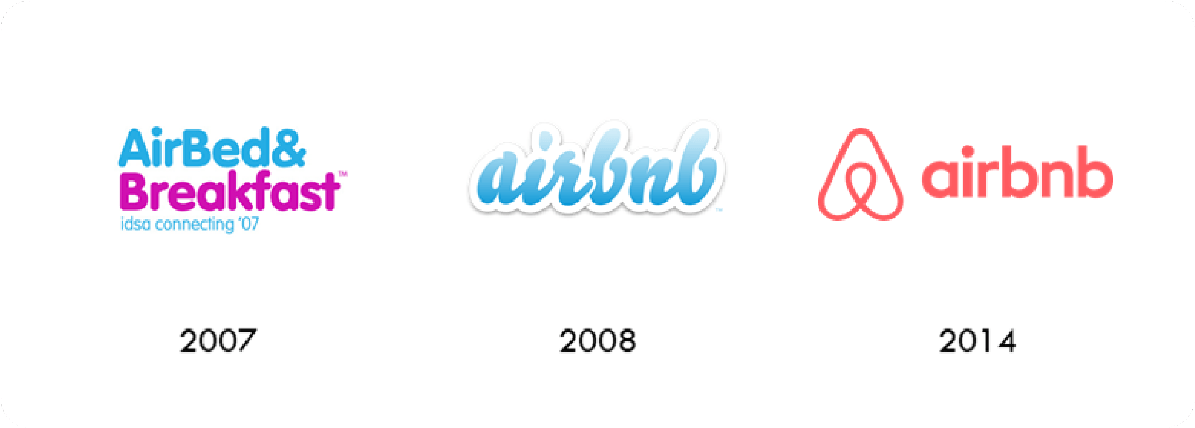
Pepsi have rebranded many times over the last 100 years to keep up with changing tastes and market trends. Their most recent changes have been about being relevant in a fast paced world, appealing to younger generations with bold modern designs.
Pepsi’s ability to rebrand consistently shows that rebranding isn’t a one time decision—it’s an ongoing process of staying in touch with your audience.

Old Spice was an old brand associated with old people. But a rebrand that poked fun at itself and modern masculinity and Old Spice became an iconic brand. The “Smell Like a Man, Man” campaign went viral and appealed to a new audience while keeping the old. This is what happens when you tap into cultural trends.
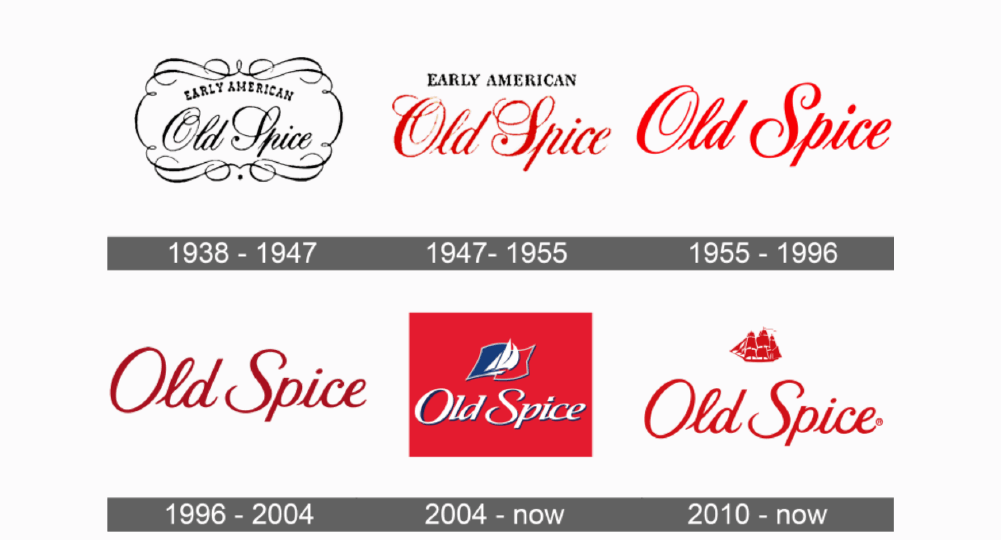
Dunkin’ Donuts dropped the “Donuts” from its name to focus on beverages and other stuff. This was to modernize the brand and reflect what customers were looking for. The visual rebrand was a cleaner logo and a focus on convenience – like drive-thru coffee. This allowed Dunkin’ to appeal to a wider, younger audience without losing the core.
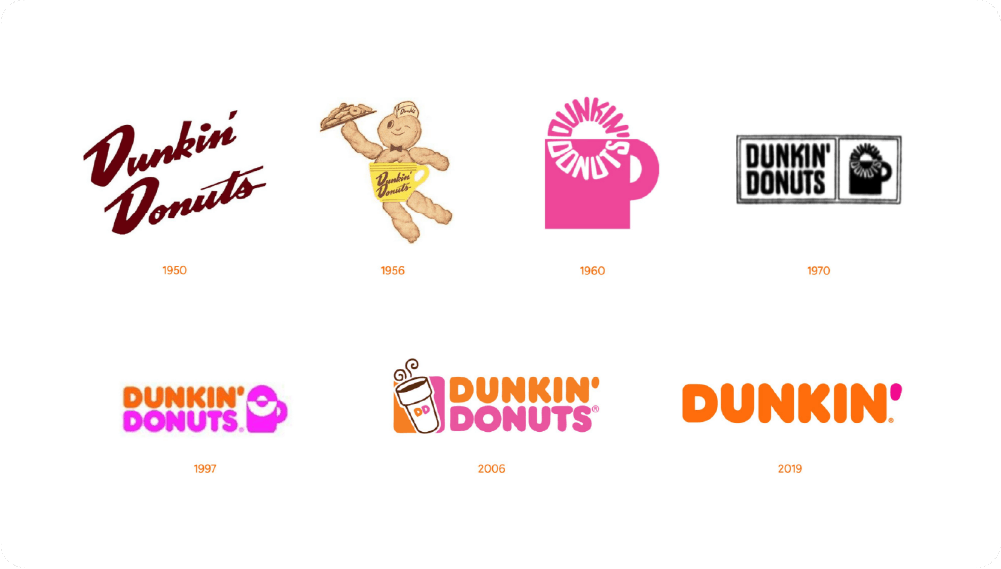
Managing internal resistance, especially from Founders or key stakeholders who are super attached to the old brand is one of the hardest parts of a rebrand. Founders have an emotional connection to the original brand identity as it represents the original vision and values that shaped the early days of the company. Here’s how you can handle this.
Firstly, acknowledge and validate the emotional attachment founders may have to the old brand. A rebrand feels like letting go of something they worked hard to build.

Solution: Show respect for the history of the brand. Open discussions with phrases like, “We know how much this means to you,” and explain that the rebrand is an evolution not a rejection of what the brand originally stood for.
Founders resist a rebrand because they feel left out of the decision making process. Involving them early on can reduce resistance by making them part of the transition rather than the change.

Solution: Engage founders from the very start. Get their input on the future vision and involve them in research, strategy discussions and design options. Position the rebrand as an opportunity to build on their legacy.
Founders may be more open to a rebrand if they see how it ties to the broader business goals, such as entering new markets, modernising the company or appealing to a changing customer base. They need to see the rebrand as a necessary step to future success.

Solution: Present data and case studies that show how rebranding can drive growth and new opportunities. Make the connection between the need for rebranding and the company’s long term strategy and show how the new identity will help the business evolve.
Founders fear rebranding means losing the heart of what the company stands for. It’s key to position the rebrand as an evolution of the brand not a departure from its roots.

Solution: Use the language of continuity. Talk about the rebrand as a way of preserving the soul of the company while updating the bits that will help it stay relevant. Highlight what will remain the same, like the mission or values.
Another way to reduce resistance is to show other companies that have rebranded without losing their soul. Founders will be more open to the idea when they see other big brands have done it successfully.

Solution: Share case studies of companies like Apple who rebranded and kept their original DNA or companies in the founder’s industry that have benefited from a new brand image.
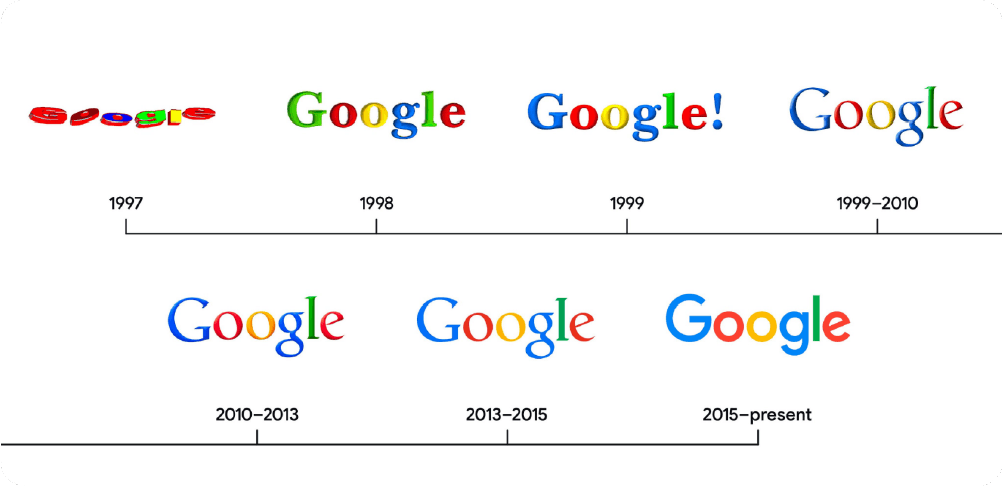
Give founders data to back up why the rebrand is needed. This could be customer feedback, market trends or competitor analysis that shows the current brand no longer resonates with the target audience or is not attracting new customers.

Solution: Do surveys, focus groups or interviews with customers and employees to get the insights. Present these findings to the founders and show that the current brand is limiting growth or opportunities. When faced with facts, it’s easier to manage.
Rather than seeing the rebrand as a break from the past, founders can be encouraged to see it as a way of building on their legacy. They can help create a future proof brand that honours the past and ensures continued relevance and success.

Solution: Position the rebrand as an opportunity for the founders to cement their legacy in the company’s next chapter of growth. Frame it as their chance to make a lasting impact by helping evolve the brand for future customers.
If resistance is high, be flexible. Founders may be attached to certain parts of the brand that can be kept, like the original colour scheme, logo elements or taglines.

Solution: Identify what can stay the same or what can be incorporated into the new identity. This will help alleviate the fear that the rebrand is a complete departure from the original vision.
Founders are stuck in the past and their original vision for the company. A clear and compelling vision for the future of the brand may help them see the rebrand as a means to long term success.

Solution: Present a strategic plan that shows how the new brand identity will take the company into the future. Highlight the benefits and opportunities and show how the rebrand aligns with the founder’s vision for where they want the company to go.
Resistance to change is normal and it may take time for founders to fully buy in to the rebrand. Patience is key and open communication where concerns can be aired.

Solution: Encourage open conversation where the founders can share their concerns and ask questions. Have a process in place for ongoing feedback and iteration so they have space to gradually come on board.
Measuring rebrand success is key to make sure the changes you made actually worked and are in line with your strategy. Here’s how to measure rebrand success:
Rebrand success can be measured by how customers, employees and the public perceive the new brand.

Customer Surveys: Ask customers how they see the new brand compared to the old one. Do they think the new identity reflects the company’s values and has it changed their perception of the brand.

Social Media Monitoring: See what’s being said about the rebrand on social media. Social media is an authentic window into the public’s first reactions and overall sentiment.
A key objective of rebranding is to increase brand recognition.

Brand Recognition Studies: Do pre and post rebranding studies to see how recognisable your brand is. Success is measured by increased recognition or association with key attributes of the new brand.

Media Visibility: A successful rebrand will generate positive media coverage which will increase brand awareness.
User engagement across digital channels is a good measure of rebrand success.

Social Media Interaction: See if engagement rates (likes, comments, shares) have increased since the new brand launched.

Follower Growth: An increase in social media followers or newsletter subscribers means the rebrand is resonating with a wider audience.
Increased website traffic post rebrand is a good sign the new identity is getting attention.

Google Analytics: Track visits, time on site and pages per session. Growth in these metrics means the new brand is working.

Lead Conversion: If visits increase and so do leads or inquiries this is a clear win.
The end goal of most rebrands is to drive sales and market share.

Sales Growth: Compare sales pre and post rebrand. A big increase means the new brand is resonating with customers.

Market Share Increase: Has the rebrand allowed your company to gain more market share or reach new segments.
A successful rebrand attracts new customers but also retains or strengthens existing ones.

Customer Retention Rate: Measure if your existing customers are still loyal post rebrand. If retention rates stay the same or increase it’s a good sign.

Customer Referrals: An increase in recommendations or referrals means the rebrand has been well received.
A rebrand should also resonate internally, so employees feel aligned and engaged with the new brand.

Internal Surveys: Ask employees in surveys how they understand and accept the new branding. Increased engagement and cultural alignment is a sign of rebrand success.

Productivity and Motivation: Positive changes in workplace culture and employee productivity means the rebranding process is working.

Market Expansion: If one of the objectives of the rebrand was to enter new markets or attract new customer segments, measure success by the number of new customers in those areas.

New Partnerships or Collaborations: Rebranding can open up new business partnerships or strategic collaborations that weren’t possible with the old brand.
A financial analysis of the cost of rebranding vs benefits gained is crucial.

Return on Investment (ROI): Does the additional revenue generated from the rebrand exceed the cost of the rebranding process.
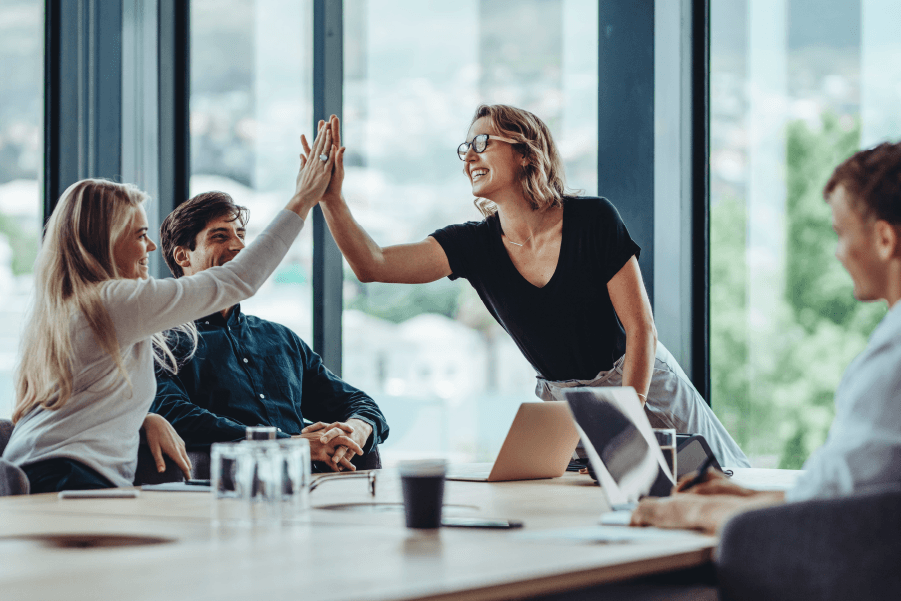
A good rebrand should lead to more customer engagement, more sales and a stronger presence in your target market. Measuring success is looking at customer feedback, tracking changes in brand perception through surveys and monitoring key metrics like social media engagement and website traffic.
A well executed rebrand should feel seamless to your audience, the new identity should integrate in gradually without confusing or alienating them.
So when thinking about your business future ask yourself: does your current brand still reflect you? Are you reaching the audience you want or have you outgrown your original identity?
If your business is at a crossroads rebranding might be the way to go—so you can have a brand that truly represents you and where you’re going.
Your brand deserves to stand out with a powerful identity that connects and converts. Don’t let an unclear strategy hold you back from success.
Partner with LIBRA 4 humans to create a cohesive brand identity that speaks to your audience and aligns with your goals. Let’s build something remarkable.






Reach out to LIBRA 4 humans and let’s create something exceptional.
Jump on a call with us today and together we’ll work out the best way to reach your business goals.
Your journey to online excellence starts here.
Reach out to LIBRA 4 humans for expert guidance on tailor made SEO solutions.
Taking the first step often requires a leap of faith, and that's why we value these 30 minutes to understand the challenges your business faces.
Please complete a few questions so we can ensure our meeting is both efficient and productive.
Talk to you soon!